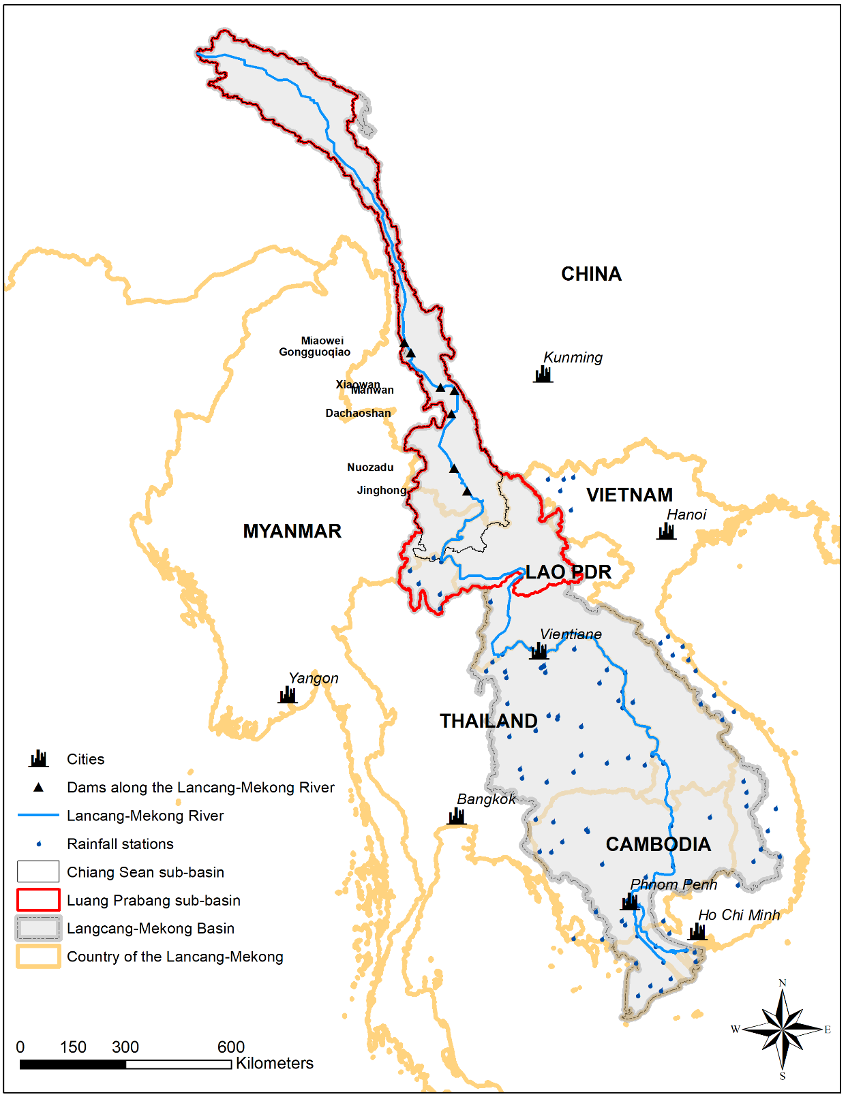State of the Upper Mekong River Basin
The developments and changes in the Upper Mekong Basin should be taken into account when developing and managing the Lower Mekong Basin. The SOBR includes a description of the situation in the Upper Basin, where the river is known by PR China as the Lancang River. Reviews have been made of those parts of the basin within the territory of both Myanmar and China, referred to here to as the UMB-C and UMB-M respectively. The review of the Upper Mekong is based on MRC data and information as well as official and credible secondary sources from academia and international organizations.
The UMB-C has been developed rapidly over recent years, with land-use changes, industrial activities, and hydropower construction and operation all affecting the river in various ways. In particular, dam development has led to major changes in seasonal flows and sediment loads. Both are noticeable in the Lower Mekong Basin, with the impact on flow regime becoming progressively less visible further downstream. At Chiang Saen, the mostly northerly mainstream monitoring station in the LMB, average dry season flow in 2010-2017 increased by 35% in comparison with 2000-2009, while flood season flows reduced by 31%.
The commissioning of the Chinese reservoir cascade has also had a substantial impact on the sediment budget of the river, with clear reductions of 60-70% in sediment concentrations observed directly downstream of the main dams. This, along with sand mining in both the Upper and Lower Mekong mainstream, has implications across the basin, with total sediment loads at Pakse having fallen by 55% in 2015 compared to historic levels. These reductions in sediments have implications throughout the mainstream up to the delta and coastline, the full consequences of which are yet to be seen in the LMB.
Further alterations of the flow regime are expected over the next decades, as rising temperatures due to climate change are projected to shift the snowmelt contribution to streamflow to earlier months. An additional dam cascade is planned in Xizang province (northern part of the Upper Mekong), which will further expand the storage capacity in the UMB-C , although these reservoirs will only impact on a minor part of flow volumes from a basin-wide perspective. Dam development in the lower part of the UMB-C (in Yunnan province) can be considered largely complete with about 10 dams, including 2 large storage reservoirs. The recent cancellation of the Mengsong Dam is regarded as positive for the maintenance of transboundary fish migration.
The development of storage capacity in the UMB-C has not only significantly altered river dynamics, but also provides an unprecedented opportunity to manage 18% of the overall Mekong flow volume. This illustrates the importance of continuing efforts to strengthen cooperation between China and the lower riparian countries to ensure effective Upper and Lower Mekong basin-wide river basin management. The UMB in Myanmar is largely undeveloped as a consequence of its remoteness and social and political issues. However, in recent years, rapid land-use changes have seen a considerable part of previously natural forests converted to cropland, plantations, and mining areas. Hydropower development has also begun.
Data availability on environmental indicators is quite limited, although with 1-4% of Mekong streamflow contributed from Myanmar, the impact of UMB-M developments on basin-wide hydrology is small.

Wet season flow volumes downstream of Jinghong dam in China
User guidance: You can interact with the chart by moving the cursor over the bars.
The existing dams with an installed capacity of over 100 MW had a total capacity of 19,285 MW in 2017 (mostly in Yunnan Province). Although on a much smaller scale, hydropower is now also starting to be developed in the UMB-M, with the first dam commissioned in 2017 and construction of further dams by both Chinese and Myanmar developers expected.
Hydropower dams in the UMB of China with an installed capacity of over 100 MW
User guidance: You can sort the table by clicking on the column headers.
Planned hydropower dams in the UMB of China with an installed capacity of over 100 MW
User guidance: You can sort the table by clicking on the column headers.
Key characteristics of hydropower projects in the UMB in Myanmar
User guidance: You can sort the table by clicking on the column headers.